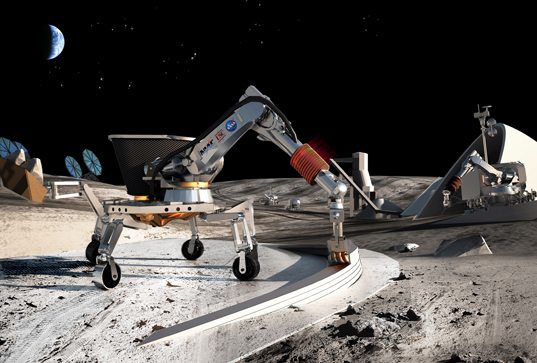Building a Human-Supporting Rover with FDM
NASA has been employing FDM 3D printing for its agile rover, a product of NASA’s astronauts and engineers that was created to be able to survive the brutal conditions of Mars. The Desert RATS (Research and Technology Studies) is about the size of a Hummer and boasts a pressured cabin in order to support life in space. It could ultimately serve one of NASA’s loftiest goals: human exploration of Mars. In the nearer future, similar vehicles might help humans investigate near-earth asteroids.
The project has proved to be integral to NASA’s goal of extending humanity’s reach in space. The cabin is made to accommodate two astronauts for multiple days as they study the extraterrestrial surface. Its twelve rugged wheels on six axles grapple over irregular, unsure terrain. And its forward-jutting cockpit can tilt down to place its observation bubble low to the ground.
3D Printed Rover Parts
To design such a tenacious and specialized vehicle, NASA engineers drew on ingenuity and advanced technology. For example, about 70 of the parts that make up the rover were built digitally, directly from computer designs, in the heated chamber of a production-grade Stratasys 3D Printer. 3D printing with FDM creates complex shapes durable enough for rough terrain of Mars.
When you’re building a handful of highly customized vehicles and subjecting them to otherworldly punishment, stock parts and traditional manufacturing methods aren’t enough. 3D-printed parts on NASA’s rover include flame-retardant vents and housings, camera mounts, large pod doors, a large part that functions as a front bumper, and many custom fixtures. FDM offers the design flexibility and quick turnaround to build tailored housings for complex electronic assemblies.
“You always want it to be as light as possible, but you also want it to be strong enough.” — Chris Chapman, NASA Test Engineer
For its 3D printed parts, NASA uses ABS, PCABS and polycarbonate materials. FDM technology from Stratasys is the only 3D printing method that supports production-grade thermoplastics which are lightweight but durable enough for rugged end-use parts.
Every day, NASA engineers and their devices bridge the gap between practical concerns such as budget and manufacturability, and the human drive to discover the secrets of unfamiliar worlds — in the workshop, in the desert, and eventually on another planet.
